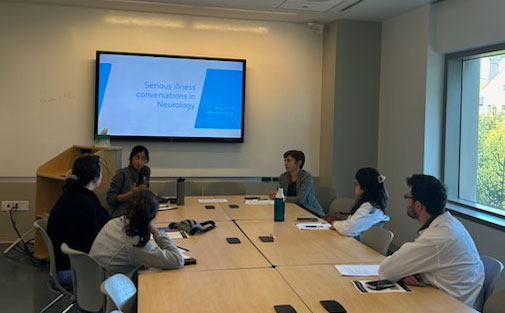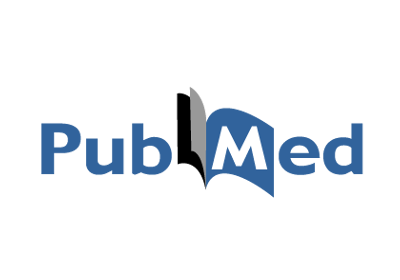Publication Spotlights
Congratulations on our team's most recent publication achievements!
 A recent publication on teaching palliative care to neurology residents at UMass in a simulated setting showcases the collaboration between palliative care and neurology in a recent article published in Neurology Journal titled Curriculum Innovations: Enhancing skills in serious illness communication in Neurology Residents Using Simulation:
A recent publication on teaching palliative care to neurology residents at UMass in a simulated setting showcases the collaboration between palliative care and neurology in a recent article published in Neurology Journal titled Curriculum Innovations: Enhancing skills in serious illness communication in Neurology Residents Using Simulation:
Read the article published by UMass Chan News, https://www.umassmed.edu/medicine/research/researchers-in-the-news/palliative-care-and-neurology-collaborate-to-develop-curriculum-that-aims-to-improve-serious-illness-communication-skills-for-neurology-residents/
February 2025
Author(s) Bahadar Srichawla, Daksha Gopal, Majaz Moonis, of the February 2025 publication in Neurology International journal, titled, Association of Statin Therapy with Functional Outcomes and Survival in Intracerebral and Subarachnoid Hemorrhage.
Author(s) Bahadar Srichawla, Vincent Kipkorir, Rakhee Lalla, of the February 2025 publication in Medicine journal, titled, Central-variant posterior reversable encehpalopathy syndrome in association with adrenal insufficiency: A case report.
Author(s) Maria Garcia-Dominguez, Majaz Moonis, Vincent Kipkorir and Bahadar Srichawla, last author, of the February 2025 publication in Medicine journal, titled, The Clinical and Radiographic features of eastern equine encephalitis: A single-center retrospective case series.
Kevin E. Houston, first author, of the February 2025 publication in Translational Vision Science and Technology journal, titled, A Single-Center Sham and Active Controlled Double-Blind Randomized Crossover Trial of the Magnetic Levator Prosthesis for Severe Blepharoptosis.
Author, Eleonora D'Ambrosio, first author, of the February 2025 publication in Muscle and Nerve journal, Wiley Online Library titled, Comparision of Two Questionnaires for Sleep-Related Symptoms in Pediatric and Adult Patients With Myotonic Dystrophy Type 1.
January 2025
Author, Bridgette Van Zundert, first author, of the January 2025 publication in SpencerNature journal of the Subcellular Biochemistry book series titled, Epigenetics in Neurodegenerative Diseases.
Author(s), Mustafa Al Gburi, Maria Mazzola, Martina Absinta, Maria I Gaitan, Daniel S Reich, Sathish K Dundamadappa, Christopher C Hemond, of the January 2025 publication in Sage Journals titled, Paramagnetic rim lesion formation is predicted by the initial gadlinium-enhancing lesion diameter.
Author(s), Elif O Dogan, Sean R Simonini, James Bouley, Alexandra Weiss, Robert H Brown Jr, Nils Henninger, of the January 2025 publication in Annals of Neurology journal titled, Genetic Ablationof Sarm1 Mitigates Disease Acceleration after Traumatic Brain Injury in the SOD1G93A Transgenic Mouse Model of Amyotrophic Lateral Sclerosis
